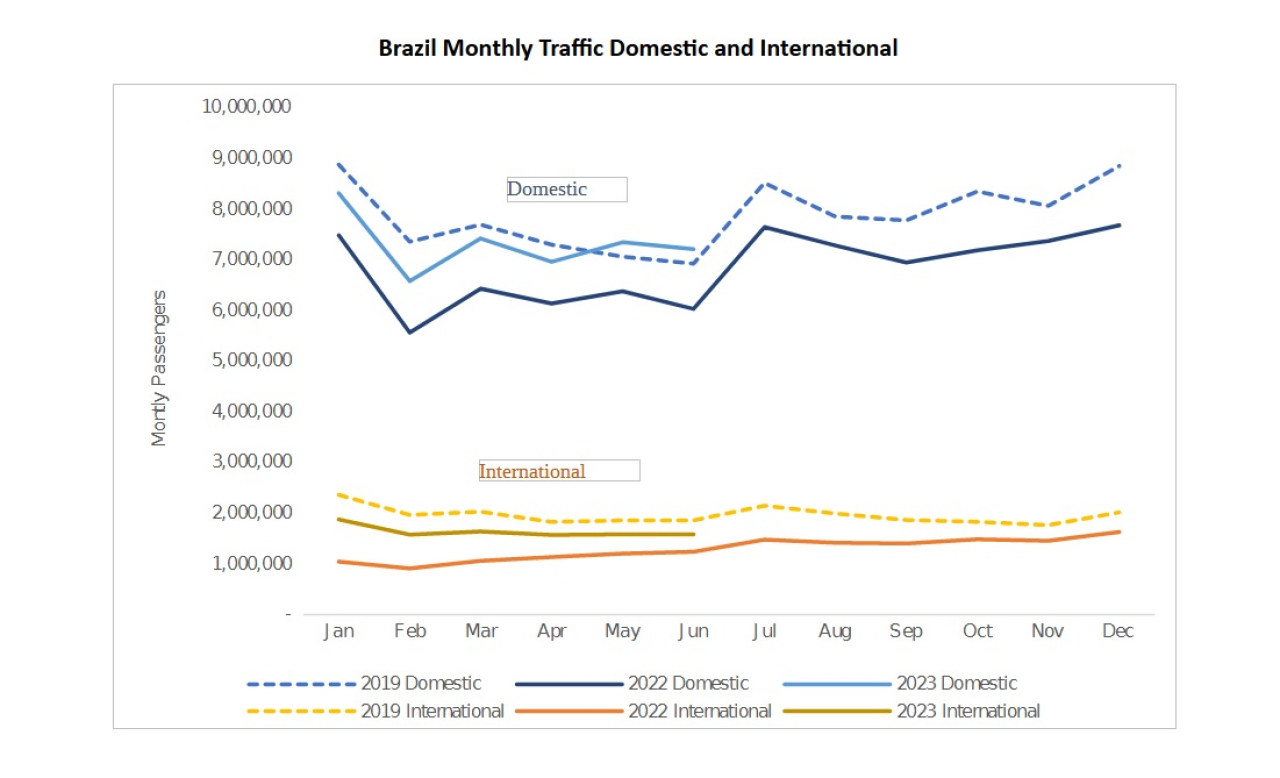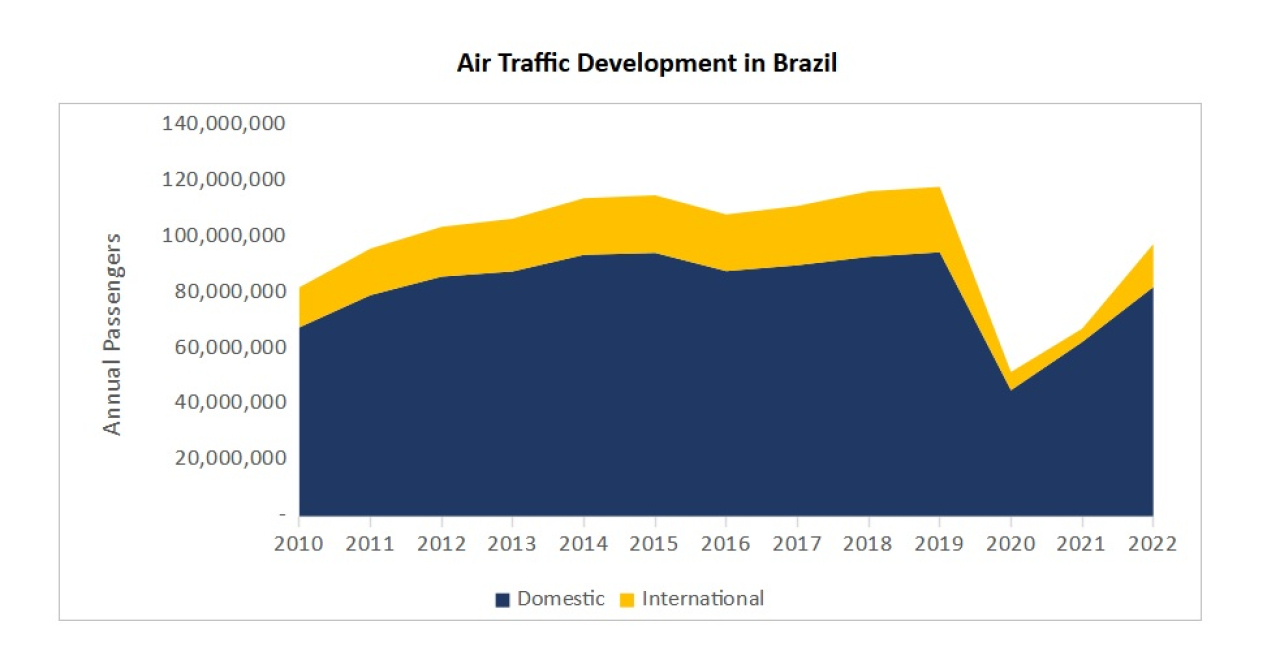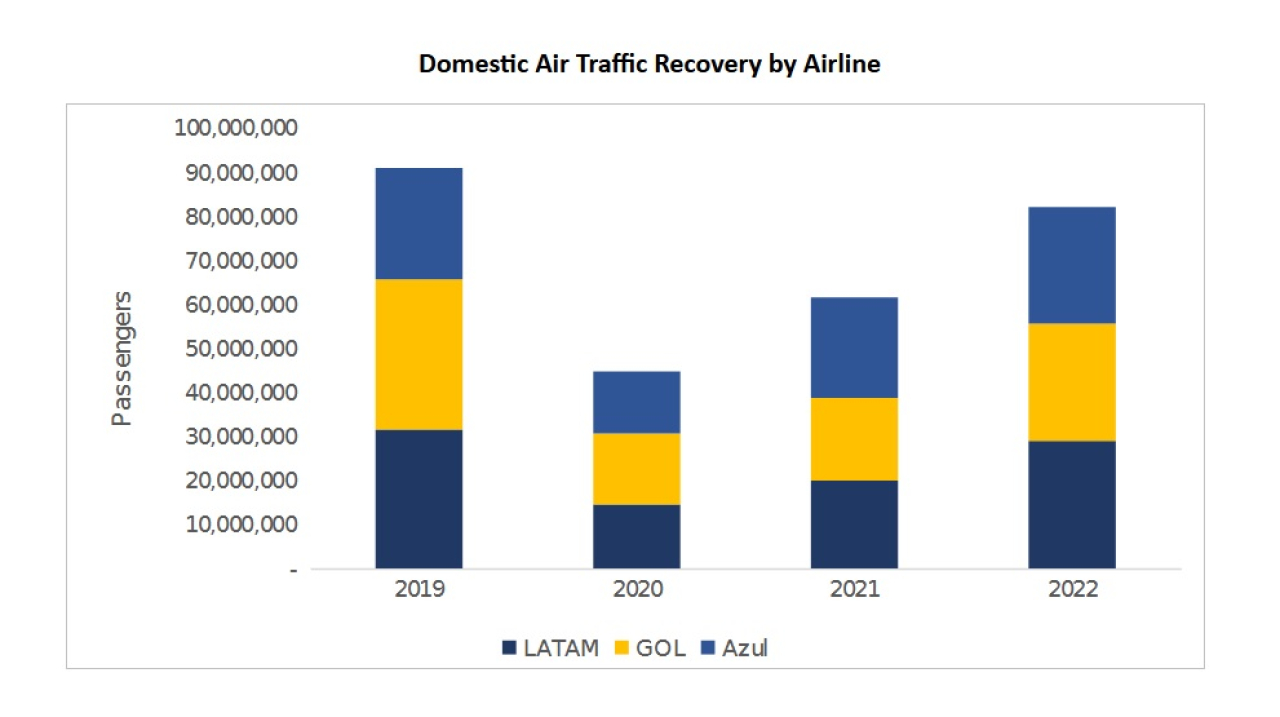Brazil’s Air Traffic Surpasses 2019 Levels for the First Time
Dion Zumbrink
August 16, 2023

Rio de Janeiro.
© Agustin Diaz Gargiulo / Unsplash
Air traffic recovery in Brazil has been lagging behind some South and Central American countries such as Colombia and Mexico, but ahead of others like Argentina and Chile. However, in May this year, for the first time, domestic traffic surpassed 2019 levels.
June recorded a similar trend, indicating this was not a one-off event. Domestic traffic was significantly higher than last year, 15% and 20% in May and June respectively, showing a continuous recovery trend.
Although international traffic is recovering more slowly, this traffic flow is now also showing strong growth (see chart below), with numbers in the first five months of 2023 being almost 50% above the same period in 2022.

© Dion Zumbrink
Demand is Returning
The aviation sector in Brazil experienced a difficult time with little growth from 2015 due to a national recession, whereas from 2010 traffic had been growing strongly, especially due to Azul entering and stimulating the market.
As a large part of the airports in Brazil are managed by private investors, the slowdown put a strain on financial returns and also reduced appetite for new airport concessions. Currently, the government is rethinking the planned concession of São Paulo - Santos Dumont Airport, as well as re-negotiation/re-concession of Rio de Janeiro’s Galeão Airport (GIG) and Infraero's remaining 49% stake in the GIG concession company.
Brazilian airlines have suffered from demand impact during the pandemic as well as increased costs due to the devaluation of the Brazilian real against the US dollar. Add in high oil prices and 2022 was a particularly tough year for them. Airlines have therefore been careful with adding back capacity into the market and could not afford to gamble with lower ticket prices as was the case in Colombia, for example, to stimulate the market.
In 2022, yields were therefore already some 10-20% above pre-pandemic values according to ANAC data, making air travel expensive for passengers and slowing the recovery. In the first five months of 2023, yields have decreased which undoubtedly helped the recovery this year.

© Dion Zumbrink
Airlines in Better Shape
Additionally, Gol faced delays in delivery of their 737MAX fleet orders and therefore had the lowest recovery rate, standing at just 78% of 2019 traffic in 2022. Meanwhile, Azul surpassed its 2019 volume by 5%, and LATAM remained in between with 92%. In 2023 however, it appears that Azul is consolidating, with relatively mild growth rates compared to the same months last year, while both Gol and LATAM are registering between 20-30% growth each month compared to 2022.
Gol’s growth this year is being helped by the 737MAX deliveries now coming in, with 15 jets expected this year. On the other hand, Azul is now focusing on profitability and cost-cutting with significant debt to be repaid in the coming years resulting from deferred lease payments. A recently struck deal with the lessors however has given the airline some extra time for repayments.
LATAM faced a Chapter 11 bankruptcy protection procedure during the pandemic but successfully left this in November 2022. In its Q2 2023 statement, the carrier confirmed it grew stronger in Brazil than in any of its other markets, with 18.5% more flights versus 6.5% in Colombia, Chile, Peru, and Ecuador. In June it recorded over 30% passengers more compared with the same month in 2022.

© Dion Zumbrink
Brazil’s economy has performed very well in 2023 and exceeded expectations. In the first quarter, it registered a GDP growth of 4%. This was driven by various favorable market conditions such as the opening of China, boosting Brazil’s export market, the strengthening of its currency against the US dollar, and declining inflation.
Furthermore, interest rate cuts are expected to continue boosting the economy this year and next, all leading to a positive economic and subsequently air transport outlook in the near future. In turn, this might bring the launch of the next round of airport concessions a little closer.
